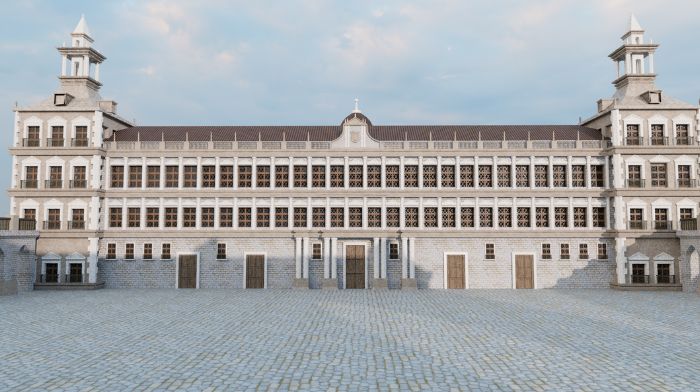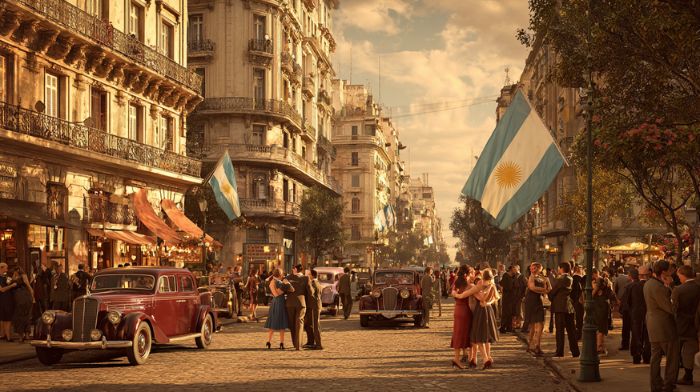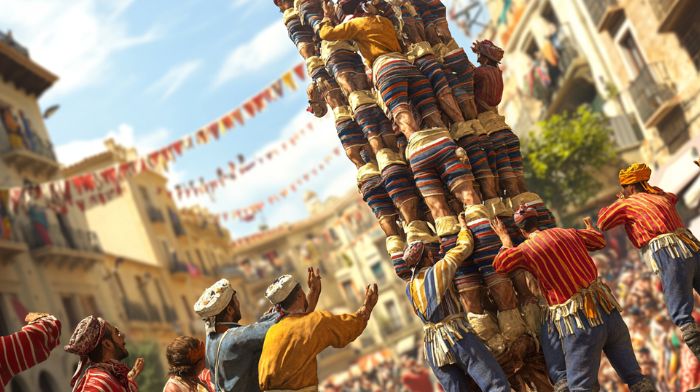Calle del Codo and the duels in the Madrid of the Habsburgs: history, Quevedo, and secrets you'll discover on our tour.

Duels in the Madrid of the Habsburgs: when honor was defended with the sword
In the heart of Madrid in the Golden Age, the duels in the Madrid of the Austrias They were more than a forbidden practice: they were a social ritual, a way of defending honor and a recurring scene in the darkest alleys of the city.
Although the laws condemned them, duels were part of the urban landscape. Swords and daggers crossed in silence, away from the eyes of the authorities, in corners like the Elbow Street, where history mixes with legend and literature.
Calle del Codo: the most dangerous and literary corner of Madrid
Located between the Villa Square and the Count of Miranda Square, the Elbow Street It is a medieval alley with a right angle shape that preserves the atmosphere of the 17th century. Its narrow, shady and hidden layout made it the perfect place for duels in the Madrid of the Austrias.
By day, it was just another street in the Austrias neighborhood; by night, it was a scene of steel and blood where personal grievances were settled. The architecture of the place, with its high walls and sharp curves, offered discretion and drama: the ideal setting for a clandestine duel.
What were duels like in Madrid's Golden Age?
The duels in the Madrid of the Austrias They followed an unwritten but highly respected code:
- Two men confront each other after a public offense.
- Swords drawn in a dark alley.
- Seconds watching every move.
- Witnesses hiding in the shadows, holding their breath.
Not all duels ended in death: sometimes a scratch or a display of courage from one of the duelists was enough. But each confrontation was engraved in the memory of a Madrid where the honor was law.
The legal context: prohibited but tolerated
Although dueling was prohibited by the Crown, the practice was so common that the authorities often looked the other way. duels in the Madrid of the Austrias They were part of the social fabric, especially among nobles, military personnel and writers.
The penalties for participating in a duel could include imprisonment, exile, or even the loss of titles. But in practice, many duelists were protected by their status or the discretion of the venue. Elbow Street It was one of those spaces where the law was diluted in the shadows.
Quevedo and his nights on Codo Street
The figure of the writer Francisco de Quevedo is closely linked to this street. Famous for his wit, his sharp pen and his nocturnal excesses, Quevedo frequented the nearby taverns and used the Elbow Street as a point of passage… and provocation.
Tradition has it that he always used to urinate on the same wall. Annoyed, a neighbor painted a cross on the wall with the warning:
“Don’t pee where there’s a cross.”
Quevedo responded ironically:
“You don’t put a cross where you pee.”
This anecdote, as scandalous as it is ingenious, has turned the street into a place full of literary legend. And it's just a sample of how the duels in the Madrid of the Austrias They were not only physical, but also verbal.
Honor, reputation and literature
In the Golden Age, honor was an absolute value. Offenses were paid for with blood, and poets like Quevedo and Góngora confronted each other not only with verse, but also with swords.
The duels in the Madrid of the Austrias They were a reflection of a society obsessed with image, reputation, and lineage. In the plays of Lope de Vega and Calderón de la Barca, duels are recurring scenes, charged with tension and symbolism.
Codo Street today: from fear to cultural tourism
Today, walk through the Elbow Street It poses no danger. It is a picturesque corner of medieval Madrid that retains its original essence. Its reputation as a dueling alley and its literary ties make it an essential stop on any tour of the city. Madrid of the Austrias.
The mixture of history, literature and legend makes this place a perfect example of how the city hides treasures invisible to the naked eye.
What do historians say?
Studies on 17th Century Madrid confirm that the duels in the Madrid of the Austrias They were frequent, especially in areas such as the Plaza Mayor, Calle Mayor and the surroundings of the Royal Palace.
The Elbow Street It appears in chronicles, letters, and stories as one of the most discreet points for resolving disputes. Its shape, location, and history make it a symbol of the culture of honor in Baroque Spain.
And how do we explore it in HistARy?
In HistARy Madrid Tour, we take you on a tour of these streets with a unique approach: Historical accuracy, surprising anecdotes and a touch of humor.
You will walk along the Elbow Street, you will discover where the knights of the Golden Age fought duels and you will hear the stories of Quevedo and other characters that gave life to the Madrid of the Austrias.
Because the duels in the Madrid of the Austrias They were not only fought with swords, but also with words, gestures and silences.
Bonus: Did you know that…?
- The Elbow Street It has such a sharp curve that it was used as an ambush point.
- Quevedo was imprisoned several times… but never for urinating on the cross.
- Some duels were resolved with a single blow, others lasted for hours.
- The term "second" in duels comes from the companions who guaranteed the legality of the confrontation.
- In the Madrid of the Habsburgs, dueling was almost a sport… but without medals.
Experience history like never before
Reserve your spot now on the Madrid of the Austrians Tour with HistARy.
Discover the duels in the Madrid of the Austrias, Calle del Codo, Quevedo and the secrets that the city hides.
Download your tour now at histary.es, with the quality guarantee of HL Comedy Tour.
Explore the past with future technology.
-
 The fire at the Alcázar of Madrid: it changed the city forever: Was Philip V to blame?November 20, 2025
The fire at the Alcázar of Madrid: it changed the city forever: Was Philip V to blame?November 20, 2025 -
 Argentina: from world power to economic meme (and back again)November 12, 2025
Argentina: from world power to economic meme (and back again)November 12, 2025 -
 Calle del Codo and the duels in the Madrid of the Habsburgs: history, Quevedo, and secrets you'll discover on our tour.October 22, 2025
Calle del Codo and the duels in the Madrid of the Habsburgs: history, Quevedo, and secrets you'll discover on our tour.October 22, 2025 -
 Spain in Shakespeare's universe: more than a Castilian accentOctober 5, 2025
Spain in Shakespeare's universe: more than a Castilian accentOctober 5, 2025 -
 Why are self-guided AR tours the future of cultural tourism?September 14, 2025
Why are self-guided AR tours the future of cultural tourism?September 14, 2025 -
 The Legend of King Arthur: Between History and MythSeptember 4, 2025
The Legend of King Arthur: Between History and MythSeptember 4, 2025 -
 The Valencian origin of the human towers – A shared history between Valencia and CataloniaAugust 14, 2025
The Valencian origin of the human towers – A shared history between Valencia and CataloniaAugust 14, 2025 -
 The Great Horse Manure Crisis of 1894 – How Victorian London Faced an Urban ApocalypseAugust 5, 2025
The Great Horse Manure Crisis of 1894 – How Victorian London Faced an Urban ApocalypseAugust 5, 2025 -
 Nahmanides: The wise man from Girona who defied kings and left his mark on three continentsJuly 16, 2025
Nahmanides: The wise man from Girona who defied kings and left his mark on three continentsJuly 16, 2025 -
 Girona's Cocollona: History, legend, and mystery under the Eiffel BridgeJuly 2, 2025
Girona's Cocollona: History, legend, and mystery under the Eiffel BridgeJuly 2, 2025









